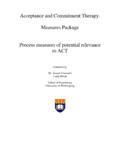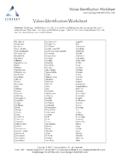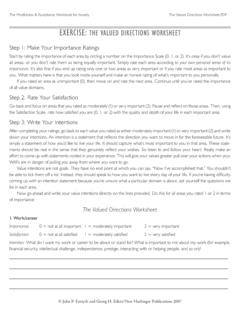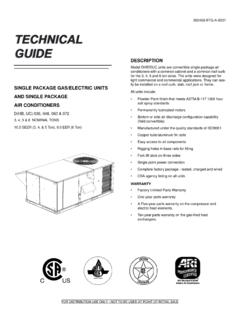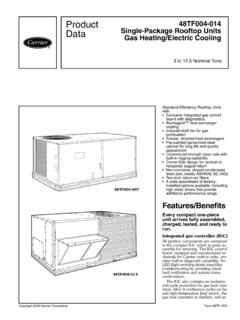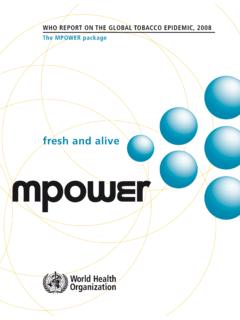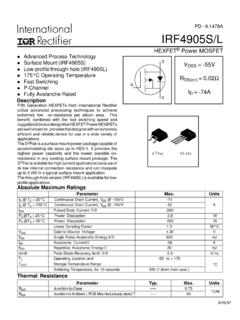Transcription of Acceptance and Commitment Therapy. Measures …
1 Acceptance and Commitment therapy . Measures Package Process Measures of potential relevance to ACT. Compiled by Dr. Joseph Ciarrochi Linda Bilich School of Psychology University of Wollongong 2. Table of Contents Forward .. 3. Avoidance / 4. The Acceptance and Action Questionnaire (AAQ-2).. 5. White Bear Suppression Inventory (WBSI) .. 13. COPE .. 15. Emotion Control Questionnaire (ECQ2) .. 20. State Social Anxiety and State Emotion-Regulation Questionnaires .. 24. Repressive Defensive 27. Miller Behavioral Style Scale (MBSS).. 33. Experiential Avoidance Task (EAT) .. 37. Balanced Inventory of Desirable Responding (BIDR) .. 41. Fusion / Dysfunctional 44. Automatic Thoughts Questionnaire (ATQ) .. 45. Personal Need for Structure (PNS).. 48. Belief in Personal Control Scale (BPCS) .. 50. Dysfunctional Attitude Scale (DAS) .. 54. Narcissistic Personality Inventory (NPI).
2 57. Rosenberg Self-Esteem Scale (RSE) .. 61. Adult Dispositional Hope 63. Adult State Hope Scale .. 65. Domain Specific Hope Scale (DSHS) .. 67. Sociotropy Autonomy Scale (SAS) .. 72. Mindfulness / Awareness of 78. Kentucky Inventory of Mindfulness Skills (KIMS) .. 79. The Mindfulness Attention Awareness Scale (MAAS).. 82. Toronto Alexithymia Scale (TAS-20) .. 85. Value clarification / Goal striving / Action orientation .. 87. Personal Strivings Assessment .. 88. Personal Values Questionnaire .. 94. Valued Living Questionnaire (VLQ).. 105. The BULLs-eye Instrument about valued life Primary Care Version (BULLI-PC) .. 108. The Bulls-eye Instrument about Valued Life .. 113. Action Control Scale (ACS-90).. 119. Pleasant Events 124. ACT Measures for specific populations .. 136. Diabetes Acceptance and Action Scale for Children and Adolescents (DAAS) .. 137.
3 Avoidance and Fusion Questionnaire for Youth (AFQ-Y) .. 141. Child Acceptance and Mindfulness Measure (CAMM) .. 143. Chronic Pain Acceptance Questionnaire Revised (CPAQ-R) .. 146. Chronic Pain Values Inventory (CPVI) .. 148. Psychological Inflexibility in Pain Scale (PIPS) .. 151. The Body Image - Acceptance and Action Questionnaire (BI-AAQ).. 153. Trauma Specific AAQ (AAQ-TS) .. 156. General ACT Measures .. 157. ACT daily diary 158. ACT weekly 159. Revised date (4 October 2006). 3. Forward We use this package for educational purposes only. If you wish to use a scale for research or for other purposes, you must contact the original author and get permission, or sort out any copyright issues. If you do intend to use a scale, please make sure you have the most recent version of the scale and the correct response items for the scale. We attempted to include the most recent and accurate information, but it is the responsibility of the user to double check this.
4 We have placed Measures into groups, based on our intuition of what ACT process they most relate to. However, future research will need to establish if these Measures cluster as we have suggested. There is no question that these Measures often cross boundaries. For example, narcissism seems to involve believing inflated self-evaluations (fusion) and hostile defence against any threat to these evaluations. The AAQ clearly Measures components of experiential Acceptance and effective action orientation. This is a developing document, and will continue to be updated as Measures are revised and new Measures are identified. If you have a measure you would like to add to the list, please contact Dr. Joseph Ciarrochi at Revised date (4 October 2006). 4. Avoidance / Acceptance Revised date (4 October 2006). 5. The Acceptance and Action Questionnaire (AAQ-2). Author: Frank Bond leads the way with this measure, but many in the ACT community have been involved in the development The AAQ-2 assesses a person's experiential avoidance and immobility and Acceptance and action.
5 Scoring: The items on the AAQ-2 are rated on a 7 point Likert-type scale from 1 (never true) to 7 (always true). High scores on the AAQ-2 are reflective of greater experiential avoidance and immobility, while low scores reflect greater Acceptance and action. Reliability and validity: (the following is taken directly from the ACBS website). Acceptance has been difficult to measure but we are making progress. The Acceptance & Action Questionnaire (AAQ) is our major effort so far. The primary AAQ validation study is (see attachments below): Hayes, S. C., Strosahl, K. D., Wilson, K. G., Bissett, R. T., Pistorello, J., Toarmino, D., Polusny, M., A., Dykstra, T. A., Batten, S. V., Bergan, J., Stewart, S. H., Zvolensky, M. J., Eifert, G. H., Bond, F. W., Forsyth J. P., Karekla, M., & McCurry, S. M. (2004). Measuring experiential avoidance: A preliminary test of a working model.
6 The Psychological Record, 54, 553-578. It yields a single factor solution: a 9 item solution, and a similar 16 item solution (see page 561) that drops 2 of the 9 items and adds 9 more. There is a second validation study that yields a two factor 16 item solution with a latent single factor (see attachments below): Bond, F. W. & Bunce, D. (2003). The role of Acceptance and job control in mental health, job satisfaction, and work performance. Journal of Applied Psychology, 88, 1057-1067. Unlike the primary AAQ it is keyed positively because it has primarily been used in non- clinical contexts. A couple of the items were reworded. In population-based studies, the AAQ-9 seems to work well as a measure of Acceptance . Its alpha is sometimes marginal because the items are too darned complex. We are solving that in the AAQ-II. The AAQ-9 sometimes does not work well as a therapeutic process measure, in part because it is so short.
7 Either AAQ-16 may work better as a process measure for that reason but they are a bit longer and again alpha is not always great. If you want to decide about which way to score it later, you will be able to score all of the three available AAQ versions if you use the 22 item version that combines all of the items in these two validation studies (see attachments below). The AAQ-II is under development. We seem to now have a stable factor structure with 10 items (again a single factor scale with a collection of items very similar to the original AAQ-9 -- it correlates with that version around .9). That version is attached below. Frank Revised date (4 October 2006). 6. Bond at Goldsmiths College at the University of London is heading up the international development effort. Please contact him for the current status and if you are willing to help us work on validity and reliability please let us know.
8 There are also Swedish, Dutch, Spanish, and Japanese versions of the AAQ. (Cited from the ACBS website) . *The AAQ-revised and the AAQ (49 items) are also included in this package and follow after the AAQ-2. References: Hayes, S. C., Strosahl, K. D., Wilson, K. G., Bissett, R. T., Pistorello, J., Toarmino, D., et al. (2004). Measuring experiential avoidance: A preliminary test of a working model. The Psychological Record, 54, 553-578. Bond, F. W. and D. Bunce (2003). The Role of Acceptance and Job Control in Mental Health, Job Satisfaction, and Work Performance. Journal of Applied Psychology, 88(6): 1057-1067. Revised date (4 October 2006). 7. AAQ-2. Below you will find a list of statements. Please rate how true each statement is for you by circling a number next to it. Use the scale below to make your choice. 1 2 3 4 5 6 7. never very seldom seldom sometimes frequently almost always always true true true true true true true 1.
9 Its OK if I remember something unpleasant. 1 2 3 4 5 6 7. 2. My painful experiences and memories make it difficult for me to live a life that I. 1 2 3 4 5 6 7. would value. 3. I'm afraid of my feelings. 1 2 3 4 5 6 7. 4. I worry about not being able to control my worries and feelings. 1 2 3 4 5 6 7. 5. My painful memories prevent me from having a fulfilling life. 1 2 3 4 5 6 7. 6. I am in control of my life. 1 2 3 4 5 6 7. 7. Emotions cause problems in my life. 1 2 3 4 5 6 7. 8. It seems like most people are handling their lives better than I am. 1 2 3 4 5 6 7. 9. Worries get in the way of my success. 1 2 3 4 5 6 7. 10. My thoughts and feelings do not get in the way of how I want to live my life. 1 2 3 4 5 6 7. Revised date (4 October 2006). 8. The Acceptance and Action Questionnaire Revised (AAQ-R). Below you will find a list of statements. Please rate the truth of each statement as it applies to you.
10 Use the following scale to make your choice. 1-------------2--------------3---------- -----4--------------5-------------6----- --------7. never very seldom seldom sometimes frequently almost always always true true true true true true true _____ 1. I am able to take action on a problem even if I am uncertain what is the right thing to do. _____ 2. When I feel depressed or anxious, I am unable to take care of my responsibilities. _____ 3. I try to suppress thoughts and feelings that I don't like by just not thinking about them. _____ 4. It's OK to feel depressed or anxious. _____ 5. I rarely worry about getting my anxieties, worries, and feelings under control. _____ 6. In order for me to do something important, I have to have all my doubts worked out. _____ 7. I'm not afraid of my feelings. _____ 8. I try hard to avoid feeling depressed or anxious. _____ 9.
